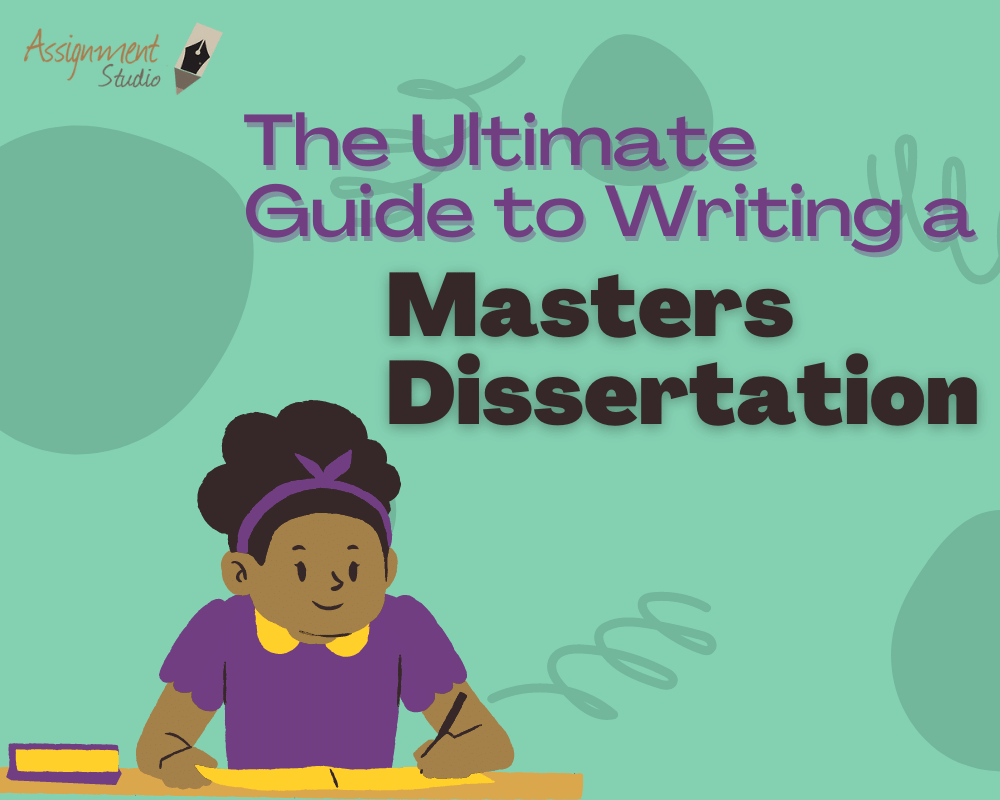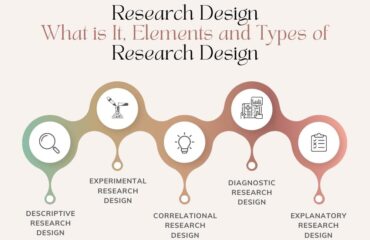
Are you striving to submit the best dissertation ever? A good dissertation should follow the dissertation structure perfectly.
The first thing that you should think about after entering the university for your master’s is about your dissertation. Questions like what a dissertation is and what its purpose is will definitely arise in your mind. So, let’s answer them first. A dissertation is an extensive piece of paper written on a specific topic that you need to submit at the end of your master’s program and its purpose is to test the independent research skills students have acquired during their time at university.
Writing a dissertation will be one of the most important tasks of your academic life, so it is advisable that you start preparing for it well ahead of time as it will be the longest piece of academic writing you will ever do and it will be intimidating as well. But, if you have a plan, then you will go through the process of writing it with ease. Having started early, good research skills, good organization, and constant reading will get your work done on time and make the process less painful. However, even with all these things, if you fail at structuring your dissertation correctly, you will have to face severe consequences.
And that is why we have come up with this guide to provide guidance on how to structure a dissertation.
Let’s Get Started
Table of Contents
What exactly is a Dissertation?
A dissertation is a long piece of academic writing based on original research. It is often organized into chapters with headings and subheadings. Every dissertation addresses a specific research question.
Although the purpose of a dissertation is to answer the question, the process is more important than the actual finding. As long as you understand and show that you have learned about the research process and are able to analyze it. And also understand why you were unable to answer the research question as easily as you thought you would. You can get a first in your dissertation. Below you will find the top 5 dissertation topics:
- The Correlation Between Patients’ Stress Levels and Nursing Help
- Modern Strategies to Collective Investment
- How Globalization leads to Mergers and International Economic Cooperation
- Issues of Tax Evasion by International Corporations and its Impact on the National Economy
- How an Effective Audit Influences Big Corporation’s Income
Type of Dissertations
The type of dissertation you will do depends on the course of your studies. You will either do an empirical dissertation or a non-empirical dissertation.
Empirical Dissertation
This type of dissertation involves collecting data from members of the public (such as psychology) or it can be entirely centered on laboratory work (such as natural and life science. When collecting data from members of the public, you need to follow professional and ethical guidelines.
Non-empirical Dissertation
This type of dissertation is based on existing data and arguments. It requires a lot of time spent reading. In a non-empirical dissertation, one needs to critically analyze what the other person is saying instead of just saying what the other person is saying.
Dissertation Structure
Not all dissertation structures are the same, the differences depend on your location, course, topic, and approach. It is recommended that you consult your supervisor before you start writing to understand the acceptable dissertation. Introduction and conclusion are the standards in every type of academic writing structure.
Parts of a Dissertation Structure
Title
Each dissertation begins with a title page. It includes the research title as well as the name of the institution to whom the research will be submitted. The title page component is arranged differently for each discipline. So, be sure to check with the supervisor.
Acknowledgments
In the acknowledgments section, you thank those people who helped you with your dissertation. You can mention the names of your supervisor, friends, and family and participate whose support and contribution allowed you to complete your work.
However, the acknowledgment section is optional. It depends on you if you want to include it or not.
Abstract
The abstract is a summary of your whole research which should be between 150 to 300 words. The abstract should be written after finishing your dissertation. In the abstract, make sure that you include:
- State the main topic and aims of your research
- Describe the methods you used
- Summarise the main results
- Conclusions
Although it is a small part of the dissertation, it is the first thing that anyone will read( sometimes the only one). So it is very important to make it attractive and get it right.
Table of Contents
List all the chapters and subheadings and their page numbers in the table of content. This list provides an overview of what is included in the research, and the structure you have used and also helps navigate through the document easily.
All parts of the dissertation structure should be added to the table of content, including the references and appendices. You can automatically generate the table of content in Microsoft Word if you use heading styles.
List and Figures and Tables
If you have used a lot of figures and tables in your research, number them and insert a caption. This too can be automatically generated by using the caption feature in Word.
List of Abbreviations
If you have used a lot of abbreviations in your dissertation, you can arrange them in alphabetical order so that readers can look up their meanings easily.
Introduction
In the introduction chapter, you briefly introduce the dissertation topic, purpose, and relevance. You will be expected to present the aims and key objectives of your research so that the reader knows what to expect in the rest of the dissertation. The following information should be included in the introduction to be classified as good:
- It establishes your research topic and provides background information
- It focuses on the research problems that you wish to address in the dissertation and also makes sure that your research focus and scope are not too broad or too narrow.
- Discuss the existing research and demonstrate how your research is relevant to the existing knowledge.
- Provide an overview of your dissertation’s structure at the end of your introduction.
Your introduction should contain information that is relevant, clear, and interesting. The reader should understand the what, why, and how of your research at the end of the introduction.
Literature Review
The literature review analyzes the academic work that already existed on the topic that you used to improve your understanding of the topic. You are reading for your research, so be very careful and make sure that the sources are legit and authentic. This chapter should include the aims and objectives which were defined in the introduction chapter. The following are the things that your literature review should aim to achieve.
- Collecting data from relevant and authentic sources (e.g. books, journal articles, and research papers)
- Critically analyze each and every source
- Drawing connections and identifying key research gaps, patterns, conflicts, and theories to make an overall point.
You shouldn’t just summarise the existing literature, but develop an argument that leads to justifying your topic. Also included in the literature review is the theoretical framework, which identifies and analyzes the key theories, concepts, and models that frame your research.
Research Methodology
You will explain the method you will use to gather and evaluate your data, as well as the decision you made, with references to further material as needed. The most commonly used primary data collection methods are:
- Questionnaires
- Interviews
- Surveys
- Focus groups
- Observation.
When writing a methodology for the dissertation you might want to consider the following:
- Type of research method that you used for your dissertation. The most common type of research includes experimental, quantitative and qualitative methodologies.
- Data collection techniques were utilized in the dissertation.
- Details about how, when, where, and what research was done.
- Data analysis strategies were used and software and tools were used for data analysis.
- Research limitations should highlight any difficulties you encounter while doing your research. The limitations of the research methodology may or may not be addressed. Some universities’ policies require them to be listed in a separate section alongside recommendations.
- Justify your selection of research methodology.
Research Finding
It can be known as the results of your research. The research finding chapter can be structured around sub-questions, hypotheses or themes.
You can combine research findings with discussion and, in some disciplines, it is strictly separated from the discussion. It also depends on the type of research involved as well as according to your institution’s guidelines. It is common to present both findings and discussion in the same section if the dissertation is based on qualitative research particularly. However, for quantitative and experimental research, the findings and discussion should be presented in two separate chapters.
Discussion
The finding is followed by the Discussion chapter. This is where you will explore the meaning and implications of your results concerning your research question. This is considered the heart of your dissertation and can make or break your research.
You are not required to mention any new data or information because this chapter is more about your own interpretation of the data that was collected and presented. Some of the questions that you should consider while working on the discussion chapter:
- Were you able to answer your research question?
- Were you able to come up with some unexpected results for which you have to provide extra justification and explanation?
- Were there any limitations that influenced your research findings?
Conclusion
And you have made it! In the final chapter, the Conclusion you will begin again from the beginning. In this chapter, you will answer the original research question that you mentioned in the chapter 1 introduction. Some institutions may ask for recommendations to analyse and evaluate your critical thinking.
By the end of your conclusion, the reader has a clear understanding of your particular research and the methods of research that were used, and what you achieved from this research.
Reference List
Here you will list all the academic sources that you used to collect information and data and they should be cited in-text (sometimes called a bibliography) so that the reader can easily locate the source from which the information came.
Common styles of referencing include APA, MLA, and Footnotes. Normally, your institute specifies which citation style should be used. So make sure to check the requirements or ask your supervisor if you are unsure. One more thing to note is that it is very important to adhere to a consistent citation style as each and every style has strict and specific requirements for how to format your reference list.
Appendices
Every chapter of the dissertation should only include relevant information that directly connects to and contributes to answering your research question. However, some material that is not directly relevant to your dissertation (interview transcripts, survey questions etc.) should be included in the Appendices section.
Editing and Proofreading
After finishing up your dissertation, the endgame is to make the dissertation well-written and flawless. Leave an ample amount of time for editing and proofreading. Grammatical errors and formatting mistakes can affect the quality of your work.
So to avoid that, write and revise your draft several times and you might want to consider using a professional dissertation editing service to make sure it’s flawless before submitting it.
Our Academic Assistance: service is all about doing research and being good at it. The more research one will do, the better the paper will turn out.








